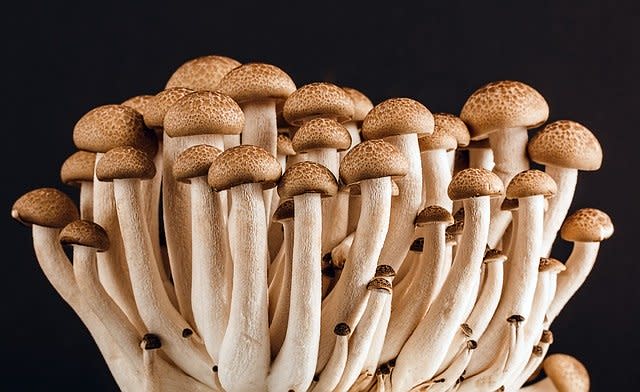15 Fastest Growing Organisms in the World
In this article we are going to list the 15 fastest growing organisms in the world. Click to skip ahead and jump to the 5 fastest growing organisms in the world.
Our planet Earth is the most diverse planet in the solar system. Over the past 4.5 billion years, our planet has sustained many life forms. Experts in the field have estimated that there exist almost 9 million species of plants and animals, of which only 1.2 million have been identified and described so far. What this means, is that over 80 percent of the species currently living in our world have yet to be even discovered, let alone recorded and studied.
In fact, these 80 percent don’t even take into consideration the thousands of microscopic organisms such as bacteria and fungi which thrive on our vast planet. These tiny organisms, or microorganisms, exist on the surface of rocks, snow, bodies of water, and soil, practically every potential habitat on the planet. Scientists have estimated that as many as 1 trillion species of bacteria are present in the world, with the number of discovered microorganisms still growing. These discoveries are then used by biotechnology companies, such as AbbVie Inc (NYSE: ABBV), Regeneron Pharmaceuticals Inc (NASDAQ: REGN), Amgen, Inc. (NASDAQ: AMGN), Gilead Sciences, Inc. (NASDAQ: GILD), and Stryker Corporation (NYSE: SYK), to create drugs for preventing and curing a plethora of diseases.
However, the diversity in organisms which exist on our planet is not limited to just name and type. Some creatures thrive in the deepest, most pitch-black parts of the vast ocean, while others use sunlight as their source of energy and nutrients. Many organisms, such as some species of turtles, can live up to 100 years though there are also other life forms, like flies, whose average life span is of not more than a few days.

Rost9/Shutterstock.com
In this article, we will be discussing and ranking the diversity of our Earth using a different criterion: growth rate. Like size, habitat, and life span, the growth rate of creatures which exist on our planet is another factor which can be used to distinguish them. It is believed that many beings which could be placed among the fastest growing organisms in the world were alive during the Jurassic Era. Using the fossilized bones discovered by palaeontologists, experts were able to track the rate at which the Tyrannosaurus Rex would grow before reaching adulthood. Mark Norell, Macaulay Curator in the Division of Paleontology explained this further in an interview, stating that “Tyrannosaurus rex, during its growth cycle, grew at almost 2.5 kilograms [4.6 pounds] per day for about 14 years.”
This brings us to our list of fastest growing organisms in the world. Although the T. Rex and other dinosaurs from its era have been extinct for millions of years, there are still countless other organisms who grow at an extremely fast pace. These organisms hail from one of the six kingdoms of life, including Archaebacteria, Eubacteria, Protista, Fungi, Plantae, and Animalia. Each of these kingdoms uses a different methodology to determine how fast an organism grows. For example, animals grow by kilograms, while plants are measured in terms of inches. In this article, we have included organisms from all six kingdoms, and have attempted to rank them despite their differing methods of growth rate. You may be surprised to see the names of not just land and water animals, but also plants and bacteria which you may even recognize. We have used various scientific publications as our source, and have ranked the organisms with regards to their growth rate over time. So let's take a look at the organisms which don't waste any time in growing, starting with number 15:
15. Mulberry Tree
Kingdom: Plantae
Scientific Name: Morus
Growth Rate: 0.07 inches per day or 2 feet per year
The first entry on our list of the fastest growing organisms in the world is the fast growing Mulberry Tree. In Asia and North America these trees are grown specifically for their leaves, as they are an important source of food for silkworms. Mulberry trees are known to grow up to 12 feet in a six year period, with a maximum height reaching 80 feet. The lifespan, however, is generally short for such a tree, with only a select few species living up to 250 years.

Pixabay/Public domain
14. Honey Fungus
Kingdom: Fungus
Scientific Name: Armillaria
Growth Rate: 0.1 inches per day or 1 metre per year
This parasitic fungus grows on woody plants which may be living, dead, or decaying. It usually spreads very quickly and can cause immense damage to forests, killing the roots of trees it spreads to. The average growth rate is about 1 meter per year, though some can spread at a rate of up to 3 feet a year under ideal conditions. An article published by the BBC in 2014 identified a specific honey fungus as the largest living organism in the world at that time. The fungus was spread over the Blue Mountains in Oregon, and measured a length of 2.4 miles.

Pixabay/Public Domain
13. Hybrid Poplar
Kingdom: Plantae
Scientific Name: Populus x canadensis
Growth Rate: 0.26 inches per day or 8 feet per year
These fast-growing trees are a popular choice for many areas which require privacy, as these giant trees offer lots of shade. These towering trees typically reach a height of up to 50 feet, and have an average life span of about 50 years. Hybrid Poplar Trees are also used as a source of energy, pulpwood, and lumber. Despite its advantages and fast-growing nature, however, many do not prefer to grow this plant near their house or garden. The reason for this is that hybrid poplar trees are very invasive in nature. They have huge, powerful roots which can spread out underground to a length of 30 inches. These roots can then break the foundations of houses, disrupt sewage lines, and destroy gardens. Any person interested in growing the hybrid poplar tree must be very cautious of these properties before planting them.

vovan/Shutterstock.com
12. Clematis Montana
Kingdom: Plantae
Scientific Name: Clematis montana
Growth Rate: 0.66 inches per day or 20 feet per year
This fast growing vine is a popular choice for those wanting to cover their balcony, trellis, or fence with pretty foliage. Most bloom from late spring to early summer, showing off small white or pink flowers which smell like vanilla. They are known to be a fairly vigorous deciduous climber among other vines, growing up to 50 feet in length. They are fairly easy to grow, aesthetically pleasing to look at, and offer a great scent of vanilla to anyone passing by, resulting in them being commonly planted in public parks, outdoor seating areas, or next to sidewalks.

Pixabay/Public Domain
11. Sunfish
Kingdom: Animalia
Scientific Name: Mola mola
Growth Rate: 0.82 kg per day
Sunfish ranks 11th in our list of the fastest growing organisms. The creature is extremely heavy, and can weigh up to 1,000 kg when it has reached adulthood. In fact, it has been declared as one of the heaviest known bony fishes in the world, with the highest recorded weight of a sunfish being 2,300 kg. That’s almost double the weight of a midsize car, which has an average recorded weight of 1,524 kg. Along with their heavy body, sunfish are known to grow at vey fast rates as well. In the engaging memoir “A fascination for fish: adventures of an underwater pioneer”, the author David Powell describes an experience in which a captive sunfish gained approximately 400 kg in just 15 months.

MOHAMED TAZI CHERTI/Shutterstock.com
10. African Turquoise Killifish
Kingdom: Animalia
Scientific Name: Nothobranchius furzeri
Growth Rate: Reaches sexual maturity in 2 weeks
In 2018, this African fish made headlines when it was crowned as the world’s fastest-maturing vertebrate. Native to the continent of Africa, the turquoise killifish is a species of Killifish which is only known to exists in the countries of Zimbabwe and Mozambique. Despite the average lifespan of this aquatic creature being between 4 to 9 months, research has indicated that it takes only 14 days to reach sexual maturity. This means, an African turquoise killifish requires only two weeks from the time of hatching to be able to reproduce, making it one of the fastest growing organisms in the world.

Pixabay/Public Domain
9. The Blue Whale
Kingdom: Animalia
Scientific Name: Balaenoptera musculus
Growth Rate: 90 kg (200 pounds) per day
This marine mammal is recorded as the largest animal to have ever existed. The maximum length of the blue whale is 29.9 meters and maximum weight is 173 tonnes. Despite being huge in size, the giant creature is not a predator, maintaining a diet largely consisting of tiny plants known as krill. They are also, for the most part, entirely harmless to humans, allowing many divers and researchers to come extremely close to them in the water.

8. Bamboo Mushroom
Kingdom: Fungi
Scientific Name: Phallus indusiatus
Growth Rate: 0.2 inches per minute
This type of mushroom has been prized for centuries in traditional Chinese medicine as having great healing properties. The fungus is also called upon as “the Bridal Veil Mushroom” due to its appearance in which it appears to look like the mushroom has a white veil over it. It is said that the bamboo mushroom grows so quickly, you can practically hear it growing in front of you, at a rate of 5 mm per minute. Along with their fast growth rate, these mushrooms have a very short lifespan, typically staying alive for no more than a few days.

7. Duckweed
Kingdom: Plantae
Scientific Name: Lemnoideae
Growth Rate: double in mass every 16 hours
Duckweed ranks 7th in our list of the fastest growing organisms in the world. Duckweed is a fast spreading free floating plant found on the surfaces of ponds and other bodies of water. Because it spreads so quickly, duckweed may cover the entire surface of a pond very quickly, not allowing oxygen to pass through to the fish underwater. This can result in the death of fish, damaging the pond as well. Still, many rely on duckweed as a source of food for both poultry and humans, as it a great source of Vitamins A and B.

6. Picochlorum
Kingdom: Protista
Scientific Name: Picochlorum renovo
Growth Rate: doubles every 2.2 hours
Picochlorum is part of the kingdom Protista, which consists of any eukaryotic organism that is not an animal, plant, or fungus. It is closely related I nature to green algae, and grows on both saline and fresh water. Picochlorum are usually very tine, with a diameter of only 1.5-3 microns.
Please continue to see the 5 fastest growing organisms in the world. Suggested articles:
Disclosure: No position. 15 fastest growing organisms in the world is originally published at Insider Monkey.

 generic
generic 